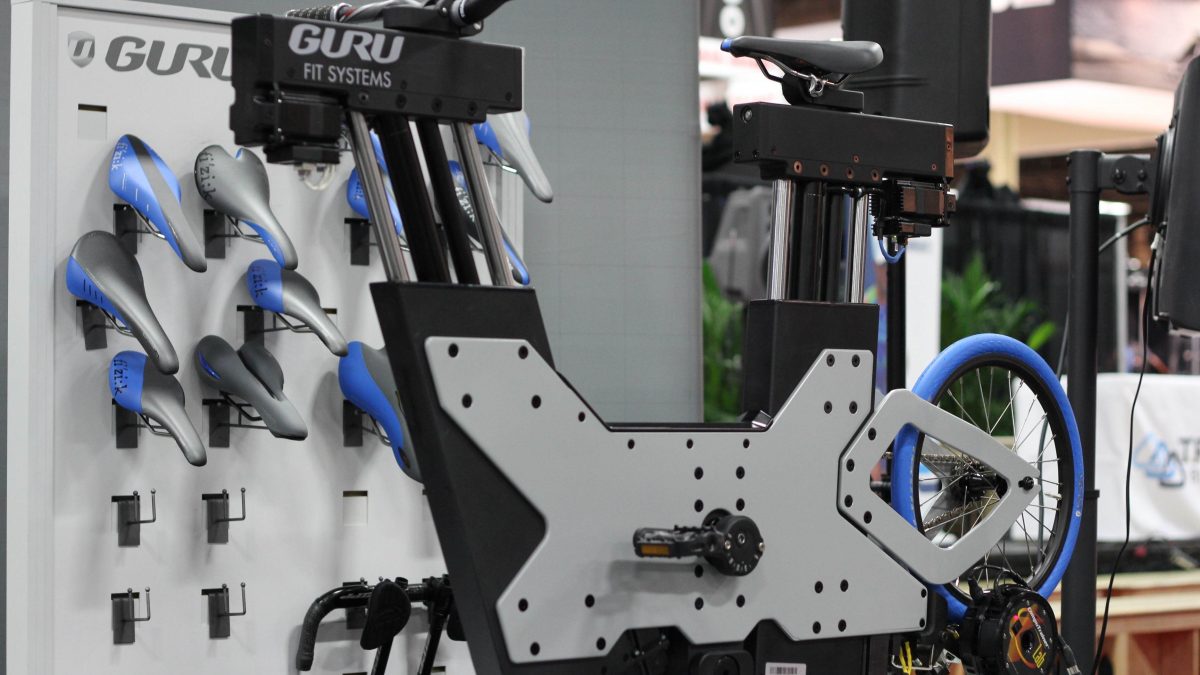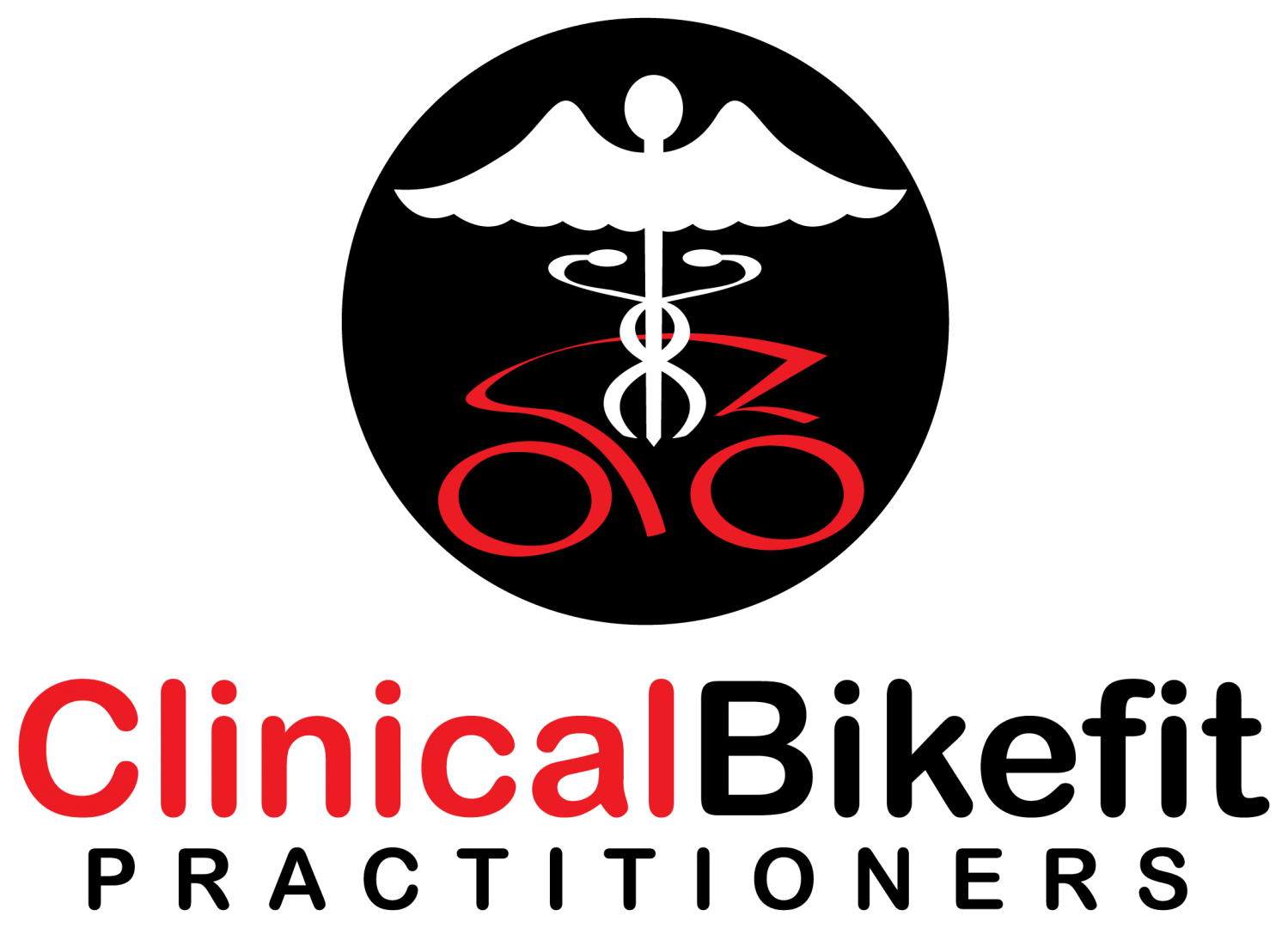
The concept of a motorized or mechanically actuated fitting machine seems like a wonderful technological advancement in the world of bicycle fitting. I certainly thought it was, when I decided to buy a Purely Custom Size Cycle and Biobike, two of many options that include the Guru DFU, Exit Cycle, Calfee Size Cycle, Retul Muve, etc., back in 2009. These systems promise to simplify the fitting process and produce better outcomes, in significantly less time, which seemed like a great solution to my overbooking problems during the “busy-season”.
Size-Cycles are not new to the industry. Serotta, Waterford, Mikkelsen, Exit, Juteau Cantin, and some others were popular for custom bike buying, to ensure proper fitting before building a client’s frame. The devices looked more or less like a bicycle, and all required a client to dismount/remount between geometry and saddle adjustments. I used a Waterford Size-Cycle to confirm custom frame orders from Seven Cycles while working at Erik’s.
The “Dynamic Fit-Bike” was born in the 90’s, somewhere in Italy. This particular device was fully automated, and looked a lot like the old-model Guru DFU. Unique to the design, bike adjustments did not require a client to dismount/remount, but for saddle/handlebar changes and cleat adjustments. Wasn’t long until Guru, Purely Custom, Biobike, Retul, Shimano and Exit Cycle designed/redesigned fit-bikes with the same feature.
Historically, Dr. Andy Pruitt is to credit for the concept, “Dynamic Fitting”. He coined the term to differentiate between fitting a client on his/her bike versus converting limb length/flexibility data into bike position. Pruitt’s work is the foundation for Specialized’s BG Fit program.
Back to my story…
I arranged for a few of my sponsored-riders to test the new bike. I transferred each person’s existing bike dimensions to the Purely Custom Fit Bike, including bars, saddle and pedals, adjusting rider position in small increments, directed by rider-feedback (comfort), power and efficiency data.
The most impressive aspect of a dynamic fit-bike is improved proprioception in response to adjustments. Cyclists can identify when the saddle and handlebars are too high, low, forward, back, with increasing accuracy throughout the process. In testing, our point of contact position-criteria was refined to <.5cm, three-dimensionally, to qualify as “optimal”.
We all loved the new Fit-Bike!
I used the Retul Zin tool to trace and transfer the data from fit-bike to client’s bike, and confirmed position accuracy by re-tracing the client’s bike before sending them home.
A few days after my first batch of riders, I started receiving negative comments about the fittings. To my surprise, in ALL cases, the adjustments did not feel good outside — from the moment they started riding, in all conditions. What the hell? We had both agreed that the “Fit-Bike” position was absolutely “perfect”. I suggested that the adjustments could reqire accommodation (1-2-weeks), and to keep me informed if things did not improve.
In my heart, I knew something was wrong. 100% dissatisfaction? Conservative position changes during base-training, are relatively safe — even with highly-trained athletes.
My initial thought was that my Retul needed calibration, which would create errors when converting data between bikes. Re-measured everything with lasers, an X/Y tool, plumb-bob & tape measure. Not a problem with the Retul;(. Everyone fit with the correct bars and saddle? Yup. Pedal to pedal distance in range for Shimano and SRAM? Yes. Crank length adjusted correctly? Yes, sir.
For the record, I am an extremely “anal” person. Some of my client referrals are accompanied by, “Go see Balser. He is OCD about Bike Fit.” Staying in character, I made it my mission to understand this phenomenon and fix the problem.
Fact #1: A bicycle will always feel different riding on a stationary trainer, compared to riding outside. A stationary trainer restricts bicycle side-to-side movement (Kurt Kinetic excluded), handlebars are fixed, and the front wheel is not moving.
Q: If there is notable difference between the trainer/road conditions, could hold true for size-cycle/trainer transfer?
I began conducting trials between Size Cycle (SC) & Client Bike Trainer (CBT) conditions, to determine which represented a better outcome for fitting.
Subjects received a “comprehensive-fitting” in each condition (2-hrs). For fun, I compared the variance between outcomes and transferred data between conditions, so that the Size Cycle was set to the Client’s Bike, and vice-versa. Range varied from .5cm, in 3-dimensions, a the bar and saddle to 3cm, fore/aft, at the saddle. 100% disliked the position when switched between conditions.
Data was then transferred from each condition to the clients’ bikes, and tested riding outside for a period of 4-days. 100% reported better positioning from the CBT condition. My data indicates a bias towards greater saddle set-back/handlebar differential for road bike fittings, and increased reach and bar differential with tri-bike fittings.
Problems with this study include:
1. Bias in the CBT condition, as a product of regular visits (sponsorship), and previous fit-data.
2. Aerobar models differed between SC and CBT conditions. This is real problem for people using fit-bikes for tri-fittings. It is nearly impossible to carry every model of aerobar/basebar for SC fittings. And converting exacting dimensions between two manufacturers will produce significantly different outcomes.
3. Small sample size — 8.
4. Non-representative population — sponsored riders.
Nonetheless, these findings convinced me to use my Size Cycles strictly for Pre-Purchase Sizing, crank-length testing, effective hip angle range (closed), and efficiency training (Power Cranks/iCranks), and to improve rider/position proprioception.
I stumbled on a possible explaination for accuracy problem, working with the company “Biobike.” The owner sent me a Biobike 5000 in 2012 (testing/feedback), to assist with software requirements and features for the new bike. Decided to conduct a few position-variance tests, and learned that these produced better outcomes then my former study, between SC and CBT conditions, and riding outside.
At the risk of introducing product bias, the biobike uses a stem for the handlebar mount and uses vibration isolators for feet. The isolators allow the bike to move around when pedaling, which is trumped only by the Kurt Kinetic Rock and Roll trainer, in my opinion. Stem length impacts weight distribution relative to geometry, and handlebar movement.
Nothing conclusive at this point, but food for thought.
What is the role for Size-Cycles in the Bicycle Industry? In my opinion, Size-Cycles represent the finest tool for New Bike Sizing. Manufacturers are marketing them to fitters, with the promise of better outcomes and increased clientele.
Problem here is that fitting constitutes a skill-set, not technology. Would you select a surgeon based on the type of scalpel he/she uses? No. You’d be sure that they were proficient at conducting the type of surgery needed. Unfortunate for the consumer, this holds true for bike-fit trainings and education, too. A recent graduate from Harvard Medical School is nearly worthless for surgery before establishing competency.
Marketing to bike shops is a better solution. Size Cycle, center-stage, for everyone who walks through the door, to ensure proper type & size, saddle and stem configuration for SAFE riding. More advanced fitting needs can be determined in process, and scheduled privately after the bike is delivered.
How does this work? Retul, Purely Custom and Guru design software to assist when purchasing new bikes, that plots existing fit-data against brands/sizes for a perfect setup. I’ve conducted hundreds of new bike fittings using the Retul software, and despite the saddle, bars and pedals being adjusted to specifications, these positions required significant modifications before satisfactory. These findings are consistent with my smaller study, barring controls.
The most obvious reason for these variances is human error. I am a fan of the Retul Zin, because it traces every component of a bicycle, relative to the bottom bracket, and converts these data into 3D specifications. Purely Custom uses laser alignment in a similar fashion. Guru converts these data from the fit bike, and uses a laser X/Y tool for client bike transfers. No doubt our data is reliable, for most, but what about the mechanic or salesperson adjusting the new bike? Do they have access to our expensive/fancy plotting tools during setup? Not mine! Not only are they expected to understand our data (in bike fit-jargon), we want them to produce the same dimensions using a tape-measure, plumb-bob and level. And if the software designates exacting headset spacers stem length and hood type, what about the numerous other details: Hood position on the handlebars? Hood angle? Aerobar pad width, angle and rotation? Extension angle? Basebar angle? Sadle angle? Get it?
Not necessary if the bike is used for sizing, but sufficient to require a trip to the trainer with your fitter if you paid for a fitting!
For the sake of argument, let’s say the software determined exact placement and angle for componentry, including the width and shape of areobar pads, extensions, and base bars, with these dimensions applied precisely as indicated to said bike. Fit should be perfect, right?
Let’s ask Ben…
Most of you know Ben Serotta. Ben is fanatical about a bike representing the geometry indicated in the design, and his frames are famous for ride quality and frame alignment. So I asked Ben,”Why can’t I replicate my fit coordinates from one bike to another? He explained that geometry and sizing is altered sightly when manufacturing with carbon fiber. And even the slightest variation in frame geometry changes bike fit and ride characteristics.
Why my long discourse?
An increasing number of people are requesting specialty services, with surprising confidence that the problem is not fit-related. “My bike fit is great, but my low back hurts”, “knee hurts”, “arm hurts”, etc. In nearly all cases, these folks were fit using a Fit-Bike/Size-Cycle, and adjusted to the “ideal position”, as determined subjectively. It is difficult trying to help these folks, being respectful of their fitter(s), and partial-fittings are not in my business model (yet). Should I say, “maybe your arm pads slipped, which is why you feel better after my adjustments”?, which is not my style. Better this problem it be avoided completely, if possible.
Tips:
1. If your bike does not feel “right” after fitting, request a follow-up. 2. Refinement is the key to optimal outcomes. My experience is that a body changes when positioned correctly on a bicycle, because symmetry and proper weight distribution improve stabilizer function at the lumbar spine. I go into detail about this in the “Fit Related” section of my website.
2. There are no “short-cuts” when fitting for positive outcomes. The refinements necssary to optimize a rider’s position require time, patience, and attention to detail.
3. Be sure to test your Size-Cycle fitting on the bike you intend to ride, on a trainer and then outside, before conveying you satisfaction with the fitting.
4. Insist on a follow-up fitting for after you’ve been out a few times. Your feedback from riding outside is as important as your feedback throughout the fitting-process.
5. If it does not feel “right” it isn’t.
